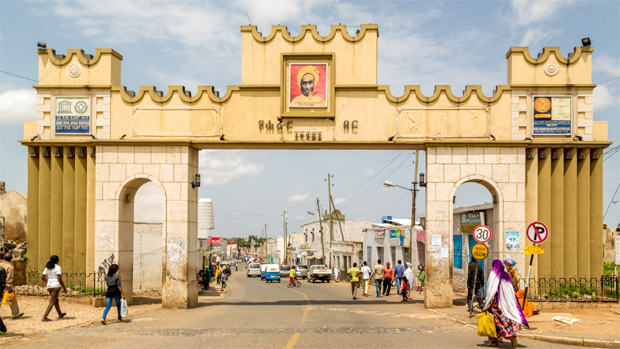Harar, Africa’s Holiest City

The historic small town Harar was established by Sultan Abu Beker Mohammed in 1520. The hilltop surrounded by Savannah and wall, Harar is located in Eastern Ethiopia. The protective barrier walls enclosing the city were built between 13th and 16 centuries housing exceptional interior design which constitute the most spectacular part of Harar’s unique cultural heritages. The development of the town, building types and its urban layout is influenced by African and Islamic traditions.
The old city Wall of the place is the main attraction and symbol of Islamic architecture. Harar have approximately 90 mosques, which form the largest concentration of mosques in the world. The city has been under Egyptians occupation for ten years who took part in the construction of mosques. At the end of the 19th century Indian immigrants also introduce their cultural way of construction adding value to the unique style of construction.
For centuries it was an important city for trade with its own currency. Harar then began to disintegrate and lost its status as a trade center in the end of nineteenth century when the railway line was built between Addis Ababa and Djibouti through Dire Dawa which is 40 km far from Harar. From 1902, Dire Dawa became the main commercial center of Ethiopia. However, it remained as the spiritual City of Ethiopia, Djibouti and Somaliland Muslim communities. It officially become a federal city-state since 1995. The people are known to preserve and uphold their culture and quality of handicrafts including weaving, basket making and bookbinding. The exotic constructions, shrines, markets and charming people take you back to the 10th century.
Read more at: Jovago.com



